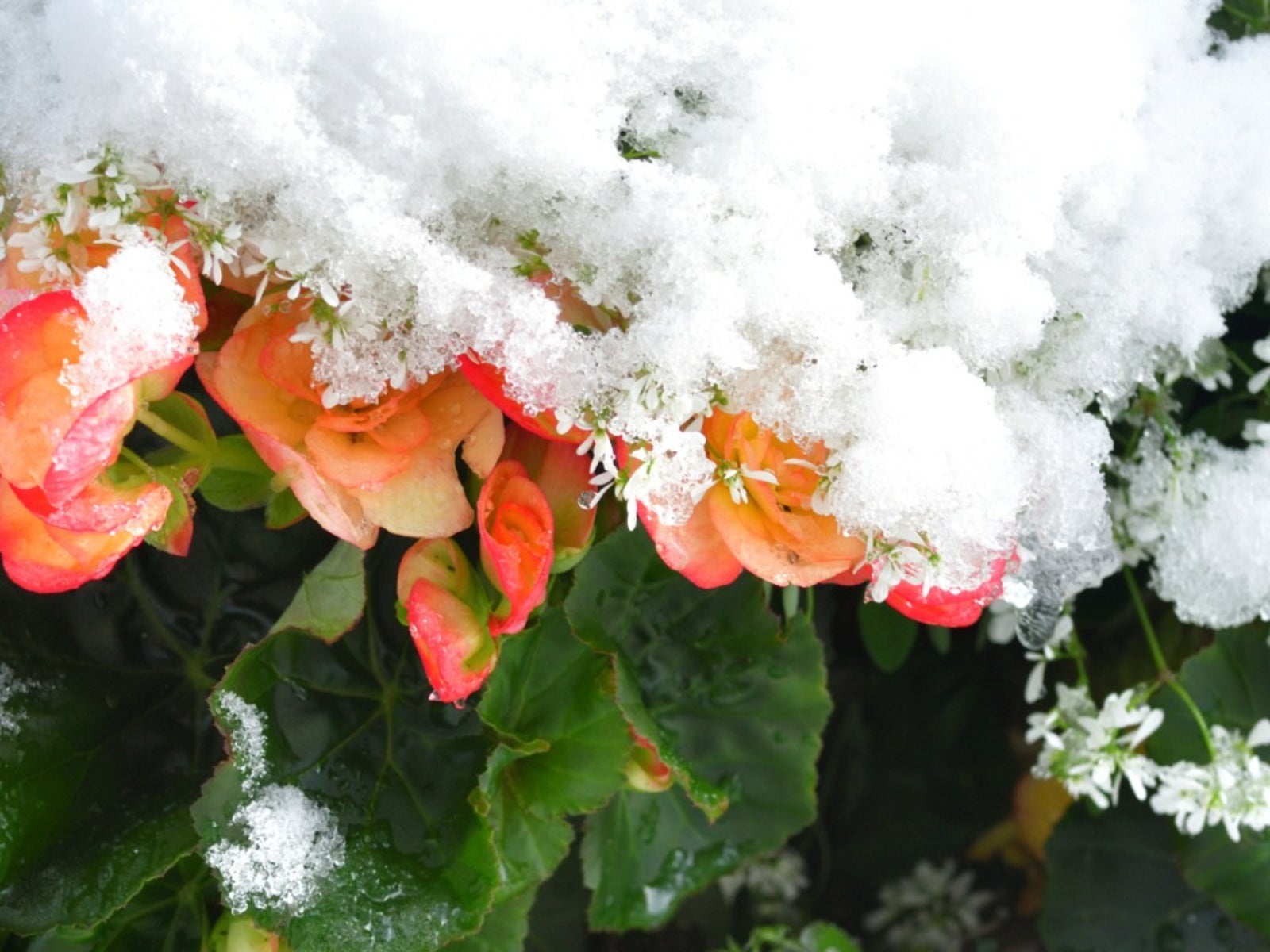Wintering Begonias: Overwintering A Begonia In Cold Climates


Tonya Barnett
Begonia plants, regardless of type, cannot withstand freezing cold temperatures and require appropriate winter care. Overwintering a begonia isn't always necessary in warmer environments, as winters are generally less severe. However, to ensure proper begonia care, you should be wintering over begonias as houseplants indoors if you live in areas prone to freezing temperatures.
When to Overwinter Begonias
The process of preparing the plants for winter generally begins in early fall. Tender species can be overwintered indoors as houseplants. Others may be allowed to die back naturally before the storage process can start. Learning how to overwinter begonias properly will be vital in ensuring you can enjoy your favorite varieties for seasons to come.
How to Overwinter Different Types of Begonias
There are three main types of begonias: tuberous, wax, and foliage. How you go about wintering begonias will depend significantly upon the type being grown, so make sure you know which type you have before going forward.
Tuberous Begonias
Tuberous begonia winter care is relatively simple. Each plant should be allowed to die back naturally after the first frost. Next, dig up the tubers and remove the stems and leaves down to the crown. Any loose soil should also be removed in preparation for a brief curing period that lasts approximately two weeks.
Spread begonia clumps on newspaper and leave them in a sunny area until thoroughly dry -- about a week. Once they have sufficiently dried, cut away any remaining foliage and gently shake off excess soil.
At this time, the tubers can be moved to storage. To prevent problems with fungus or powdery mildew while overwintering begonias, dust them with sulfur powder prior to storage. Experienced growers suggest packing each of the tubers into a cardboard box or paper bag that's been filled with sawdust or vermiculite. Begonias will overwinter best in a cool, dark, dry location, remaining frost-free throughout winter.
Wax Begonias
Some begonias can simply be brought indoors prior to the onset of cold weather for continual growth, such as with wax begonias. Since these plants don't have a period of dormancy, pots and containers will need to be moved inside before any chance of frost. If they’re in the ground, they can be carefully transplanted into containers first before being brought indoors. A high-quality potting mix will be essential, as begonias require rich soil with good drainage.
Gardening tips, videos, info and more delivered right to your inbox!
Sign up for the Gardening Know How newsletter today and receive a free copy of our e-book "How to Grow Delicious Tomatoes".
Before bringing a wax begonia indoors, however, be sure to treat it for insect pests or powdery mildew first. This inspection can be done by spraying plants or gently washing them with warm water and bleach-free dish soap.
Since bringing wax begonias indoors can cause plant stress, leading to leaf drop, it often helps to acclimate them beforehand. Move the begonias to a more shady area with partial sun for a week or two, then start bringing the plants inside for a couple of days out of the week. Finally, you can situate your wax begonias near a bright window, where they are able to receive ample indirect light.
Foliage Begonias
This type of begonia generally refers to those that have especially interesting or attractive foliage. Many of these species are evergreen within their native range, but can be grown annually in the home garden. Foliage begonias will require special care in winter. Experienced growers suggest bringing the plants indoors before the arrival of frost late in the season. Just like wax begonias, slowly acclimate your begonias to indoor lighting. Foliage begonias should be kept near a bright window and safely away from cold drafts or heating vents.
How to Care for Begonias in Winter
If you're growing potted begonia, overwintering care is minimal. If plants are kept warm and receive adequate light, they are likely to thrive. Containers should be kept consistently moist throughout the winter, with growers checking soil conditions at least once per week. Tuberous begonias in storage should also be checked regularly -- make sure to discard any plant that shows signs of rot, decay, or disease.
How to Revive Begonias Next Year
You can begin to move potted begonia plants outdoors in the spring when temperatures start to warm. Moving the plants indoors should be done gradually to harden off the plants and allow them to adapt to their new growing conditions slowly. As soon as all chances of frost have passed in the spring, the begonias can be moved to their permanent beds.
To revive tuberous begonias from storage, start by moving them to a warmer location or pot them into individual containers. The additional introduction of light will help to trigger new growth and give plants a jump start in the summer garden.

Nikki Tilley has been gardening for nearly three decades. The former Senior Editor and Archivist of Gardening Know How, Nikki has also authored six gardening books.
- Tonya BarnettWriter
-
 Looking For Plants To Give You The Soft And Fuzzies? Try These 5 Fuzzy Leaf Plant Options
Looking For Plants To Give You The Soft And Fuzzies? Try These 5 Fuzzy Leaf Plant OptionsLovers of texture, drama, silver foliage and tactile plants will adore these special sensory garden additions. These fuzzy leaf plant options will leave you all aglow
By Susan Albert
-
 Get Ready For A Summer Of Hummers! Grow These Full Sun Hummingbird Plants and Flowers
Get Ready For A Summer Of Hummers! Grow These Full Sun Hummingbird Plants and FlowersIf you’re lucky enough to enjoy a sunny backyard, make sure you are maxing out on your pollinator opportunities and grow these full sun hummingbird plants and flowers
By Tonya Barnett